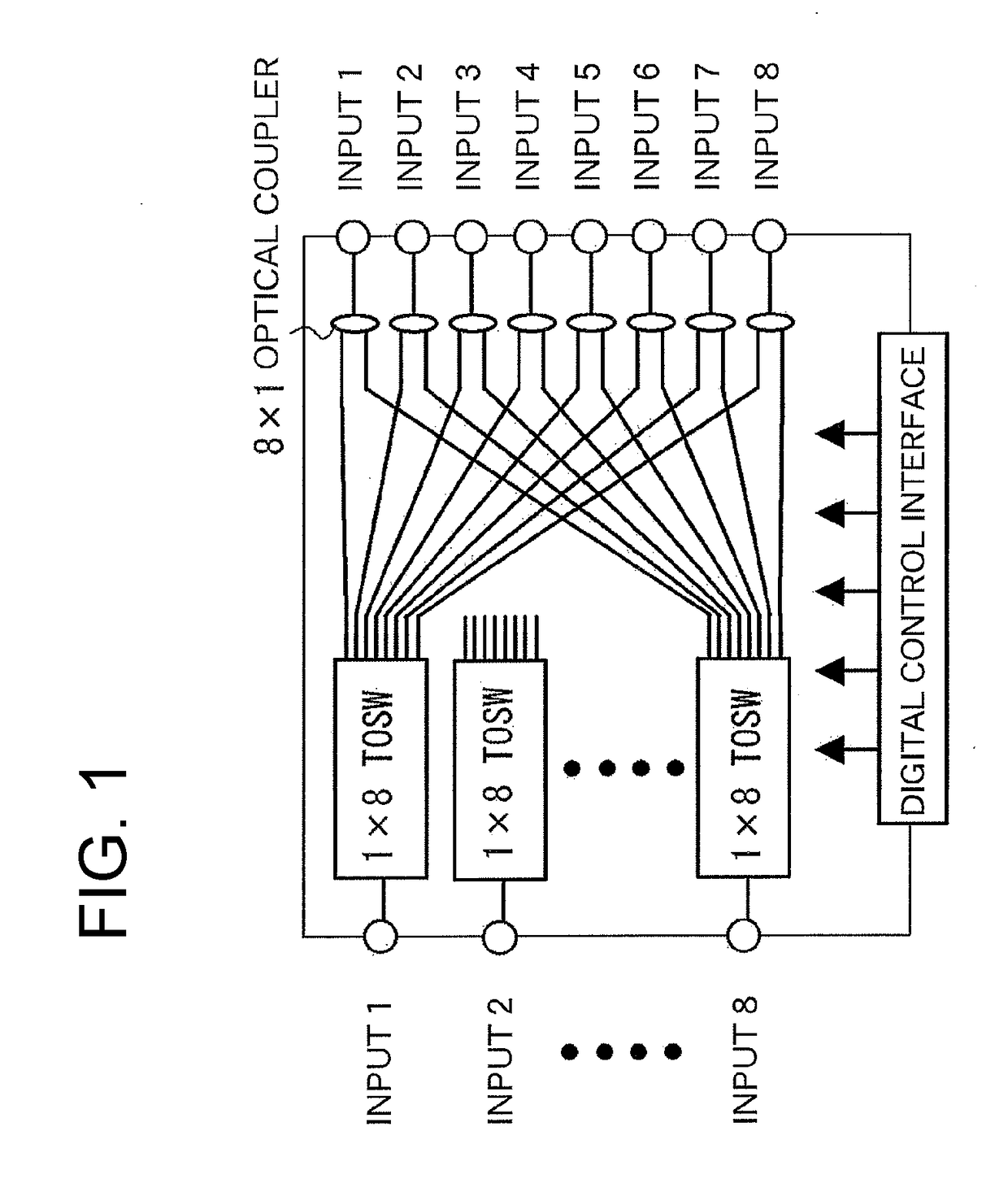Wavelength demultiplexer and wavelength multiplexer using same
a wavelength multiplexer and wavelength demultiplexer technology, applied in the field of wavelength multiplexer and wavelength multiplexer using same, can solve the problems of increasing insertion loss, difficult to completely avoid electromagnetic interference (emi) between wireless signals within the cs-dedicated domain, and a large issu
- Summary
- Abstract
- Description
- Claims
- Application Information
AI Technical Summary
Benefits of technology
Problems solved by technology
Method used
Image
Examples
example 1
[0032]FIG. 4 illustrates a block diagram of a wavelength demultiplexer of the present invention. In this example, a 16×16-port variable-splitting-ratio matrix optical switch is used as a light path switching device 3. Each element of this optical switch is a thermo-optic switch having a Mach-Zehnder configuration, and the light path switching device 3 is controlled by a controller 4. The output of the light path switching device 3 is input to the ninth to twenty-fourth ports of an AWG of a spectroscopic means 2. To the wavelength demultiplexer, an optical signal obtained by frequency multiplexing a modulated wave and a subcarrier in respective frequency bands which are obtained as a result of division so as to match the channel configuration of the AWG is input.
[0033]This configuration makes it possible to switch the light paths that are input to the spectroscopic means 2, and allows an optical signal extracted for each wavelength from multiple light paths to be obtained in a specif...
example 2
[0042]More specifically, the light path switching device 3 in FIG. 4 is obtained by, for example, forming a Mach-Zehnder interferometer on a PLC (Planar Lightwave Circuit), in which one light path heater is used for heating to change the interference state to form a switch, and is a commercially available product having 16-ch input×16-ch output (NTT Electronics Corporation). In addition, the AWG of the spectroscopic means 2 is that having 32-ch input×40-ch output with a channel spacing of 25 GHz. The transmission spectrum of a flat-top type is desirable, and, for example, the 1-dB bandwidth is greater than or equal to 9.3 GHz for a wavelength of 1556.353 to 1548.509 nm (0.2 nm / ch), which accounts for 37% of the channel spacing.
example 3
[0043]A wavelength-multiplexed signal can be obtained by inputting, from the output side of the wavelength demultiplexer described above, a modulated wave and a subcarrier in respective frequency bands obtained as a result of division so as to match the channel configuration of the AWG and by outputting them from the input side of the light path switching device. That is, the wavelength demultiplexer described above operates as a wavelength multiplexer.
PUM
 Login to View More
Login to View More Abstract
Description
Claims
Application Information
 Login to View More
Login to View More - R&D
- Intellectual Property
- Life Sciences
- Materials
- Tech Scout
- Unparalleled Data Quality
- Higher Quality Content
- 60% Fewer Hallucinations
Browse by: Latest US Patents, China's latest patents, Technical Efficacy Thesaurus, Application Domain, Technology Topic, Popular Technical Reports.
© 2025 PatSnap. All rights reserved.Legal|Privacy policy|Modern Slavery Act Transparency Statement|Sitemap|About US| Contact US: help@patsnap.com



